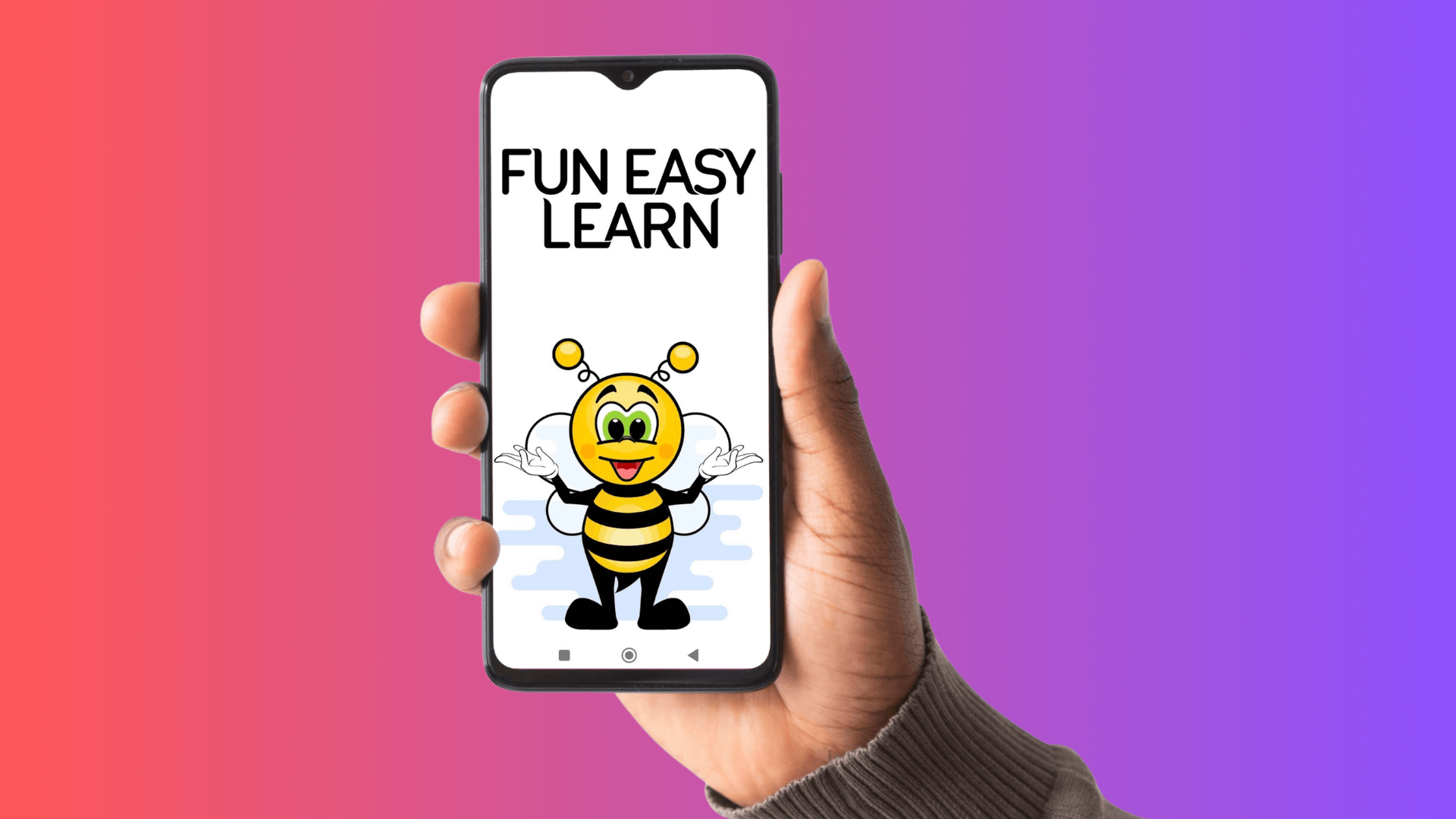Listening is one of the most challenging skills to master in language learning. For that reason, language learning apps that offer a hands-free mode are among the top searches among learners.
Audio lessons are essential to save time and build a solid understanding of the target language. When used correctly, the hands-free mode can significantly impact vocabulary retention and language skills such as listening and speaking.
Are you sure you're making the most of this feature? Let's explore it together and see how you can optimize your language-learning journey with an underrated feature.
Defining the Hands-Free Mode
Language apps and platforms use hands-free mode, a language learning method that minimizes physical interaction with devices. In other words, you learn a new language without touching your phone.
FunEasyLearn's Hands-Free mode is available with any premium plan. It enables you to practice words and sentences from specific topics or favorite lists, practice the vocabulary you are currently learning, and review learned items. Language learners build their listening skills with audio files recorded by native speakers in professional studios.
Why is the Audio Mode so Important?
Research has demonstrated that auditory reaction times average around 284 milliseconds, while visual reaction times average around 331 milliseconds. Thus, auditory processing is approximately 1.2 times faster than visual processing.
That is especially important in language learning, where conversation skills rely heavily on listening, not only speaking.
It's no secret that different languages will present a different degree of difficulty. For instance, Arabic, Chinese, Japanese, Korean, and others are more challenging for English speakers. Factors like a distinct writing system, complex verb conjugation, the use of articles, and politeness forms add to the complexity of the learning process.
Audio lessons decrease the perceived difficulty, helping learners acquire new vocabulary through repetitive practice. Once they are confident using everyday life words and phrases, it's safe to introduce writing. The technique applies to most learners at a beginner level. Advanced learners can easily combine all four language skills - reading, writing, listening, and speaking - without losing motivation.
Benefits of Learning a Foreign Language Hands-Free

From its early origins in fiction to its implementation in automobiles, hands-free communication was designed for use on the go. That's exactly how it benefits language learning. As life becomes increasingly fast-paced, more language learners prefer to build their vocabulary while commuting to and from work, standing in line, running errands, or doing house chores.
The main advantages of listening to language lessons on the go include the following:
- Safe. Instead of dividing attention to reading or playing games while driving, which can be dangerous, switch to a more relaxed activity. Listening to review vocabulary is a great way to stay safe while
- Convenient. Multitasking can extend beyond commuting. One of the easiest ways to practice speaking and listening is while doing house chores or cooking.
- Efficient. Repeating vocabulary is one of the keys to retention. The rule applies to the words and expressions you are currently learning and those you need to review.
- Convenient. Learn on the go - while driving, cooking, working out, commuting, or multitasking. Reviewing vocabulary is ideal when doing mindless chores such as cleaning.
- Eye-Friendly. Staring at screens all day long can strain your eyes. Hands-free learning offers a chance to stay productive without damaging your health. Listen to words, phrases, and expressions, and give your eyes a well-deserved break.
How to Activate the Hands-Free Mode

To activate the hands-free mode, you need to first unlock premium access to one or all of the courses. Once you've done this, open the FunEasyLearn app and log in to your account.
- Select your course.
- Access Tools.
- Click on the second tab - Hands-free.
- Choose between words and sentences.
- Select one or more topics.
- Customize the settings (language order, pronunciation order, pause, repetition) to use the audio-only features on your terms.
Once activated, the hands-free mode will play based on your custom settings. You can adjust those to repeat the same material in a loop and control the sequence of languages and pauses. The ultimate goal of this mode is to help you improve your active vocabulary even while on a tight schedule.
10 Practical Ways to Leverage the Hands-Free Learning Mode

FunEasyLearn is best known as a vocabulary builder. Its 34 language courses are based on the lexical approach to language learning, prioritizing high-frequency words and phrases to help users learn a language with less time and effort.
See below 10 practical exercises to use the hand-free mode as a powerful tool to retain new words and sentences. They work well whether you learn Spanish, Japanese, German, Hungarian, or Ukrainian, want to master Korean, or conquer any other language.
- Review to remember. Listen and repeat the recently learned vocabulary to help it commit to your long-term memory.
- Vocabulary preview. Get a sneak peek of the new vocabulary before actively learning it with the informative flash cards. Try to guess what a new word means before you hear the translation. That's a good way to develop linguistic intuition in a new language.
- Pronunciation shadowing. Forget about translations and focus only on improving your pronunciation. Paying attention to one aspect of language learning drives better results.
- Translation drills. Customize the settings so that your native language goes first, followed by the target language. Set a comfortable pause of about 3 seconds between them. Translate each word, then listen to the translation to see if you are right.
- Category sorting. Create a favorite list of words belonging to different categories. Choose them. Instead of translating each word, say its category. At the end of the session, you can recall all the words and their categories.
- Passive listening. Turn off translations and only listen to sentences in the target language. When you have some material in the target language playing in the background, you learn unconsciously, and your brain gets used to the new language.
- Guess the meaning. Once in a while, try to guess the meaning of a sentence based on what you already know. Select a topic you haven't yet learned, set the target language first, and then add a longer pause between the sentence in the original and its translation. See how much you can understand from what you hear only.
- Repeat the new sentences. Set the number of repetitions per sentence at least three times. That is especially important for different linguistic families. For instance, you will want more repetitions when you learn Japanese, Chinese, and Arabic.
- Sentence intonation practice. Focus solely on the intonation of a sentence. Whether you learn French, Italian, Russian, Thai, etc., you must practice intonation to achieve fluency.
- Mix different topics and their order. You are ready for a more advanced quiz once you are confident with the new vocabulary. Mix up other topics and set their order to random. Listen to the sentences in English and translate them into the target language.
Why Choose FunEasyLearn?

FunEasyLearn is your pocket companion when you want to build a strong vocabulary and speak confidently. The science behind the app successfully leverages vocabulary-building techniques, a smart spaced repetition system, and lessons organized for learning in short bursts.
Access a comprehensive vocabulary database
Each language course includes 6,000 carefully selected words and 5,000 practical sentences to ensure you build a strong vocabulary. The words are grouped by topics, enabling you to focus on areas most beneficial for your personal or professional needs.
Learn from your native language
Choose from 34 language courses, which can be learned in 62 native languages, from Afrikaans to Vietnamese. This feature simplifies the learning process and helps avoid confusion caused by intermediary languages.
Enjoy interactive learning
Master vocabulary through more than 30 fun and engaging educational games. Some examples are choosing the right word, selecting what you hear, finding the right image, matching words, listening, and writing games. Each activity helps you memorize the new vocabulary.
Learn anywhere
Take advantage of offline mode to keep your learning progress uninterrupted. Whether traveling, hiking, or experiencing a power outage, you can learn new words and phrases without relying on an internet connection.
Favorite lists
Personalize your learning experience by creating custom lists of words and sentences. Add difficult words to a dedicated list for extra practice or compile a selection of frequently confused terms to eliminate errors. Planning a vacation? Save key phrases to use in real-life situations.
Would you like to learn languages on the go with FunEasyLearn?











